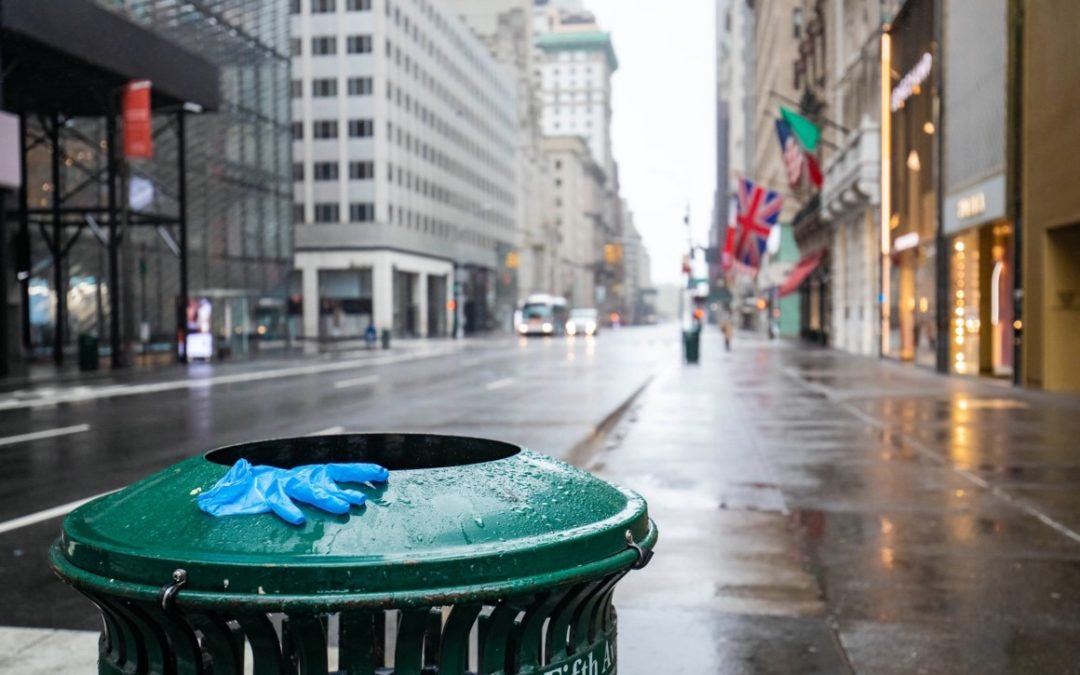Parting Americans from cars isn’t easy. But coronavirus and politics are forcing some separation. Here’s the silver lining, and why driving less may save money.
Here at NICRIS, we’re aware of the massive impact COVID-19 has had on America and New York’s day-to-day life. One of the most visible effects of quarantines, lockdowns, and business closures is how traffic here and nationwide has trickled to a near-standstill.
People are driving less now and for the foreseeable future, whether they like it or not. And before the pandemic, there were already moves to greatly reduce the number of cars on New York’s roads. For the optimists out there, here’s a positive spin: how the coronavirus and changing political attitudes toward driving could help your auto insurance.
Why driving less is a money saver
The average miles driven per year and a driver’s safety record are two major factors used by insurers to set auto premiums. It’s a simple formula: the more miles a driver covers, the more likely they are to be involved in an accident. Less time on the road equates to less risk and potentially lower premiums as a result.
Americans drive an average of 13,476 miles a year, but New Yorkers tend to accumulate only 11,871, with males in the 35-54 age bracket clocking the most miles. We recommend that any New Yorker contact their auto insurer to see if they’re eligible for a low-mileage discount. This is especially true now since we’re not only under the national average but also off the road in droves for the foreseeable future.
Drivers can consider themselves in the low-mileage category if they don’t exceed 7,000 miles a year. While regular motorists can realistically hope to save on their premiums by cutting back on road time, there’s also coverage explicitly aimed at low-mileage motorists.
Cents on the mile and travel trackers
Sometimes termed “pay per mile” policies, these are ideal for short-distance/infrequent drivers. Some novel insurance providers are proving popular by offering drivers a base rate and a rate per mile (typically a few cents). It’s not an entirely new approach since other major insurers have at least offered discounts to policyholders who are willing to add wireless devices to their vehicles.
Those devices track miles elapsed as well as other premium-centric metrics like safe performance and idling, braking, and acceleration. While some drivers don’t feel comfortable being monitored so closely by their insurer, it’s an inarguably precise way to prove that your miles genuinely are what you report to the provider. And many users drive less and save more.
One drawback of the pay-per-mile approach is that drivers don’t live and work in one place forever. An address change or job that’s significantly further away could see paying by the mile become just as costly (if not more so) than a standard policy with low-mileage deductions. As ever with insurance, the nuts and bolts of policies and deductions vary from provider to provider, so speak to yours to discover options for driving less and saving more.
For now, the coronavirus has taken the option to drive less out of our hands. It would be nice to think that the power to drive at leisure will be returned to New Yorkers post-pandemic. However, public and political attitudes could mean that reductions in road time are here to stay.
Getting used to driving less may be inevitable
COVID-19 aside, today’s nearly car-free streets may be somewhat of a preview of things to come. There’s been vocal opposition to the number of vehicles on our roads for some time. The busiest stretch of Manhattan’s 14th street, a major thoroughfare and crosstown route for over 21,000 cars, was closed to automobiles (including taxis, Lyfts, and Ubers) in 2019 to favor buses.
The opposition was fierce, but the shift proved to be successful, if not universally popular. It’s only one example of an ongoing change in New York City’s traffic attitudes, where buses and bikes are set to dominate. Mayor Bill De Blasio has a master plan in that direction, and City Council Speaker Corey Johnson vowed that it will “break the car culture” in NYC.
COVID-19 will lessen driving for New Yorkers in the short-term, but the focus on public transport points to this trend becoming the norm. This all depends, however, on the course of the virus, and the progress toward a vaccine, given the potential for public transport to spread the disease.
In any case, less time behind the wheel means drivers are statistically safer, which cuts down on expenses for insurance companies. And drivers may be eligible to save money on premiums thanks to fewer miles on the odometer.
Whatever happens traffic-wise, remember to stay safe by referring to New York’s constantly updated COVID-19 resource. The NICRIS team is here to answer your questions about insurance and help you discover how much you could save, no matter what changes are occurring.
NICRIS Insurance focuses on providing clients with the appropriate suite of products to protect them, their interests, and their loved ones. If you need some insurance advice or would like a free, personalized insurance review, just drop us a line.

